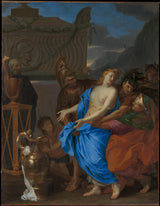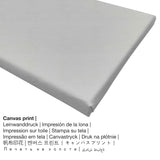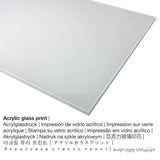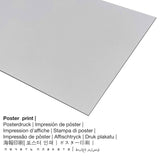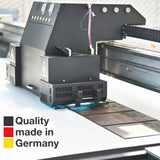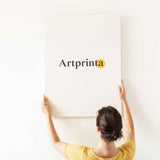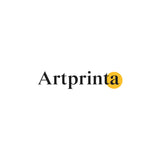Charles Le Brun, 1647 - Àjà nke Polyxena - ọmarịcha nka
Ụtụ gụnyere. Mbupu gbakọrọ na ndenye ọpụpụ.
Nkọwa nke ihe a
The Sacrifice of Polyxena bụ ọrụ nka kere site na French onye na-ese ihe Charles Le Brun in 1647. The version of the artwork was painted with the size: 70 × 51 3/4 in (177,8 × 131,4 cm) and was painted with the medium mmanụ na kwaaji. Ọ na-etolite akụkụ nke Ụlọ ihe ngosi nka nke Metropolitan collection, which is one of the world's largest and finest art museums, which includes more than two million works of art spanning five thousand years of world culture, from prehistory to the present and from every part of the globe.. This classic art artwork, which is in the ngalaba ọha a na-enye ya site n'ikike nke The Metropolitan Museum of Art, New York, Purchase, 2012 Benefit Fund, and Bequest of Grace Wilkes and Fletcher Fund, by exchange, 2013. Also, the artwork has the creditline: Purchase, 2012 Benefit Fund, and Bequest of Grace Wilkes and Fletcher Fund, by exchange, 2013. Besides this, the alignment is portrait and has a side ratio of 3: 4, nke pụtara na ogologo bụ 25% mkpụmkpụ karịa obosara. The architect, painter, decorator Charles Le Brun was a European artist, whose artistic style can be attributed mainly to Baroque. The painter lived for 71 afọ - a mụrụ n'afọ 1619 na Paris, Ile-de-France, France wee nwụọ na 1690.
Ozi nka ndị ọzọ sitere na weebụsaịtị The Metropolitan Museum of Art (© - Ụlọ ihe ngosi nka nke obodo ukwu - www.metmuseum.org)
As recounted by the Roman poet Ovid (43 B.C.–A.D. 17/18), the compliant Polyxena is led to her death at the sacrificial altar to appease the ghost of the hero Achilles. Her mother tries to restrain her while the soldier Neoptolemus raises his sword. The infant holding a chest of incense and the austere priest complete this beautifully choreographed composition, which was painted the year following Le Brun’s return from Rome. The artist became the official painter to Louis XIV and a leading figure in the academy. He later wrote a treatise on expressions and this enormously influential focus of his art is well in evidence in this early masterpiece.
Nkọwa ahaziri nke ihe osise
| Aha nka: | "Àjà nke Polyxena" |
| Nhazi nka: | sere |
| Okwu mkpokọta: | nka ochie |
| oge: | 17th narị afọ |
| Year: | 1647 |
| Afọ nka: | gbara afọ 370 |
| Ihe osise izizi: | mmanụ na kwaaji |
| Akụkụ izizi (ọrụ nka): | 70 × 51 3/4 na (177,8 × 131,4 cm) |
| Ụlọ ihe ngosi nka / ebe: | Museumlọ ihe ngosi nka nke Obodo |
| Ebe ngosi nka: | New York City, New York, Njikota Obodo Amerika |
| Weebụsaịtị nke ihe ngosi nka: | www.metmuseum.org |
| Ụdị nka nka: | ngalaba ọha |
| Site n'aka: | The Metropolitan Museum of Art, New York, Purchase, 2012 Benefit Fund, and Bequest of Grace Wilkes and Fletcher Fund, by exchange, 2013 |
| kreditline ọrụ nka: | Purchase, 2012 Benefit Fund, and Bequest of Grace Wilkes and Fletcher Fund, by exchange, 2013 |
Ozi omenka
| Ihe nkiri: | Charles Le Brun |
| A makwaara dịka: | Le Brüne, Monsu Libroni, Le Brun, M.r Le Brun, M. Le Brun, Char. le Brun, Le Brun Ch., L. Brun, Le Bruyn, LeBrun Charles, C. Lebrun, Carl le Brun, Ch. Le Brun, Charel Lebrun, Charles Lebun, Charles LeBrun, lebrun ch., Charles Le Brun, Brun Charles Le French, Carl. Le Brun, Carlo le Brun, Charles de Brün, Carlo Lebrun, Ch.-Lebrun, Le Bri︠u︡nʹ Sharlʹ, C. Le Brun, Ch. Lebrun, Charles Le Brun Chevalier, Le Brun Charles, Brun Charles Le, Chev. Lebri, Lebrun C., Charl. le Brün, Lebrun, Monsieur le Bruen, Le Briun Sharl |
| okike onye nka: | nwoke |
| Obodo onye nka: | French |
| Ọrụ: | onye na-achọ mma, onye na-ese ụkpụrụ ụlọ, onye na-ese ihe |
| Country: | France |
| Otu nka: | nna ukwu ochie |
| styles: | Baroque |
| Nwụrụ na afọ nke: | 71 afọ |
| A mụrụ: | 1619 |
| Amụrụ na (ebe): | Paris, Ile-de-France, France |
| Afọ nwụrụ: | 1690 |
| Nwụrụ na (ebe): | Paris, Ile-de-France, France |
Kedu ihe na-amasị gị?
Anyị na-enye ụdị dị iche iche nha na ihe maka ngwaahịa ọ bụla. Ka ị kwekọọ n'ihe ị chọrọ nke ọma, ị nwere ike họrọ n'ime nhọrọ nhazi ngwaahịa ndị a:
- Mbipụta nke aluminom: Aluminium Dibond prints are prints on metal with an outstanding effect of depth. The Direct Print on Aluminum Dibond is your perfect start to replicas made with aluminum. The bright and white parts of the work of art shimmer with a silky gloss but without glow.
- Mpempe akwụkwọ mmado ebipụtara na akwa akwa: Our poster is a UV printed flat cotton canvas with a slight texture on the surface. It is designed for framing the art copy with the help of a custom frame. Please note, that depending on the absolute size of the poster print we add a white margin of something between 2-6cm around the artwork in order to facilitate the framing with a custom frame.
- Mbipụta enyo acrylic: The acrylic glass print, often described as a plexiglass print, will transform the original into marvellous décor. Your own version of the work of art will be printed with the help of state-of-the-art UV print machines. It makes sharp and vivid colors. With an acrylic glass art print sharp contrasts and granular color details will be more identifiable due to the subtle gradation in the picture. Our plexiglass with real glass coating protects your selected art print against sunlight and heat for decades.
- Kwaaji: The canvas print is a printed cotton canvas stretched on a wooden frame. What is more, printed canvas makes a familiar, pleasing feeling. A canvas print has the advantage of being low in weight, which implies that it is easy and straightforward to hang the Canvas print without the use of additional wall-mounts. Because of thata canvas print is suitable for any type of wall.
Nkọwa akụkọ ahaziri ahazi
| Nkewa bipụta: | nka nka |
| Usoro mmeputakwa: | dijitalụ mmeputakwa |
| Usoro nhazi: | Mbipụta UV ozugbo (mbipụta dijitalụ) |
| Production: | Germany |
| Stockdị ngwaahịa: | mmepụta ihe na-achọ |
| A na-atụ aro iji ngwaahịa eme ihe: | foto mgbidi, ihe ndozi mgbidi |
| Nhazi nka nka: | nhazi ihe osise |
| Ụdị anya: | 3: 4 ogologo: obosara |
| Pụtara nha akụkụ: | ogologo bụ 25% mkpụmkpụ karịa obosara |
| Akụrụngwa ị nwere ike ịhọrọ site na: | ígwè ebipụta (aluminium dibond), acrylic glass print (nwere ezigbo mkpuchi iko), mbipụta akwa akwa, mbipụta akwụkwọ mmado (akwụkwọ kwaaji) |
| Ọdịiche dị n'okirikiri akwa akwa akwa (akwa akwa): | 30x40cm - 12x16", 60x80cm - 24x31", 90x120cm - 35x47", 120x160cm - 47x63" |
| Mbipụta iko acrylic (nwere ezigbo mkpuchi iko) nhọrọ nha: | 30x40cm - 12x16", 60x80cm - 24x31", 90x120cm - 35x47" |
| Ụdị akwụkwọ mmado (akwụkwọ kwaaji) dị iche iche: | 30x40cm - 12x16", 60x80cm - 24x31", 90x120cm - 35x47" |
| Mbipụta aluminom: | 30x40cm - 12x16", 60x80cm - 24x31", 90x120cm - 35x47" |
| Nhazi mmeputa nka nka: | agunyeghi |
Ozi dị mkpa: We try whatever we can in order to describe our art products with as many details as possible and to showcase them visually in our shop. Nonetheless, the tone of the print materials, as well as the imprint might diverge somehwat from the presentation on the device's screen. Depending on the settings of your screen and the condition of the surface, colors might not be printed 100% realistically. Because the fine art prints are printed and processed by hand, there may also be minor variations in the exact position and the size of the motif.
© Nchekwa ikike nwebisiinka, Artprinta.com

